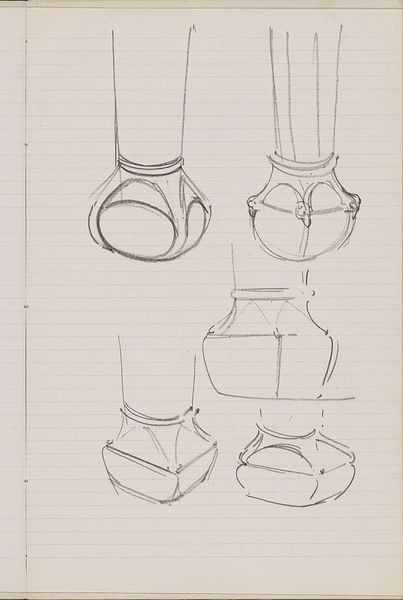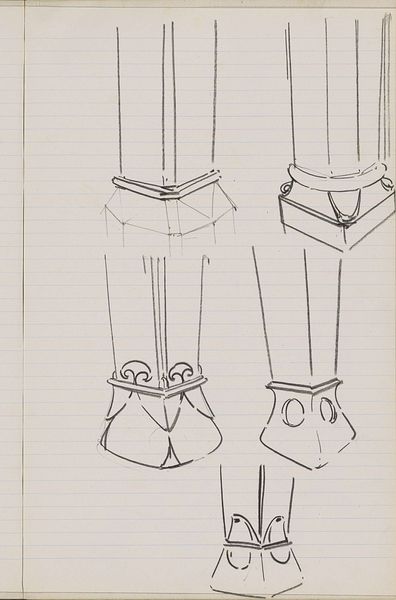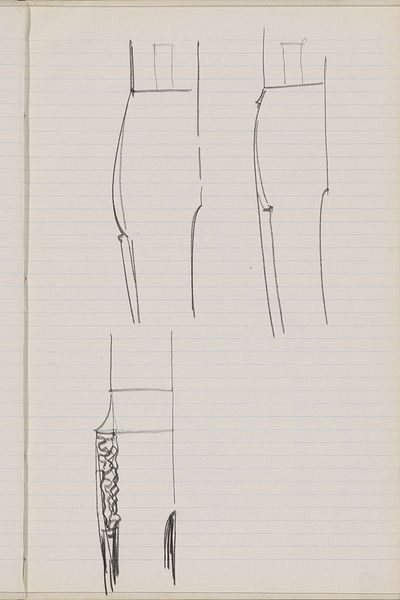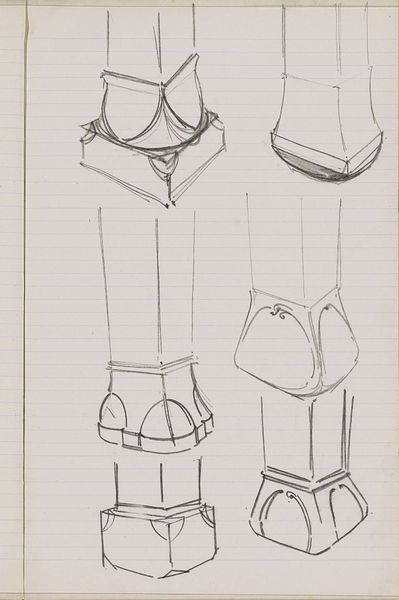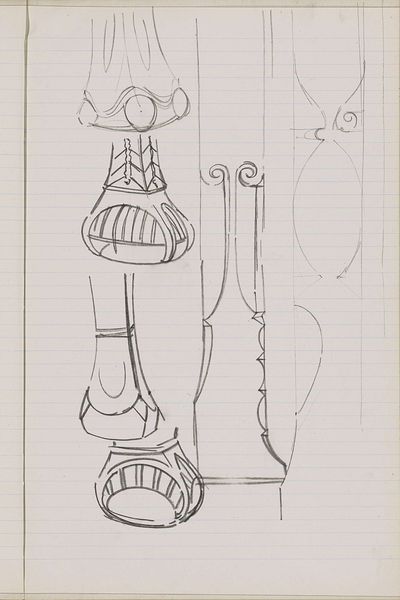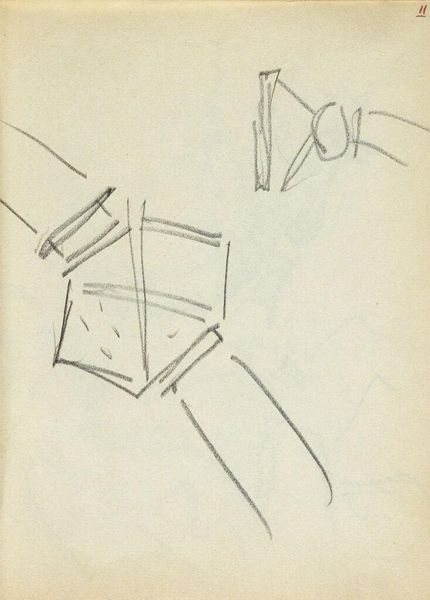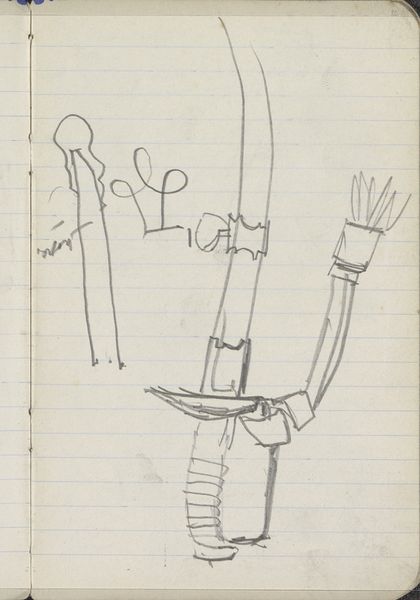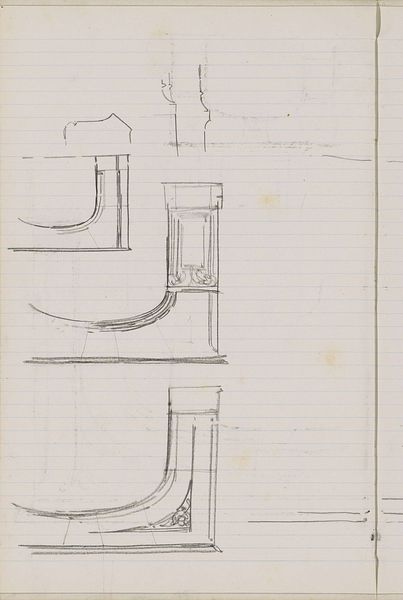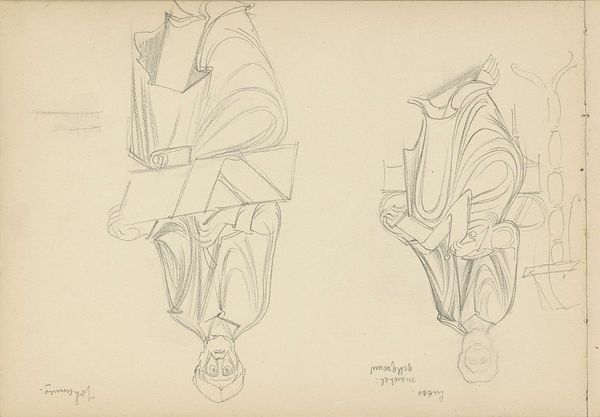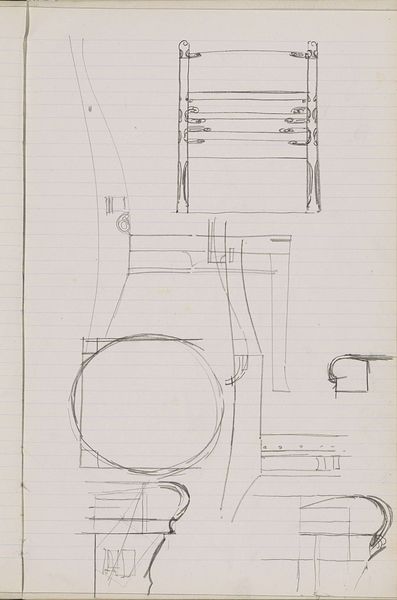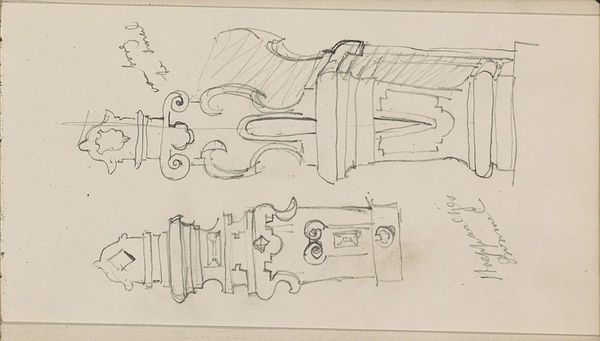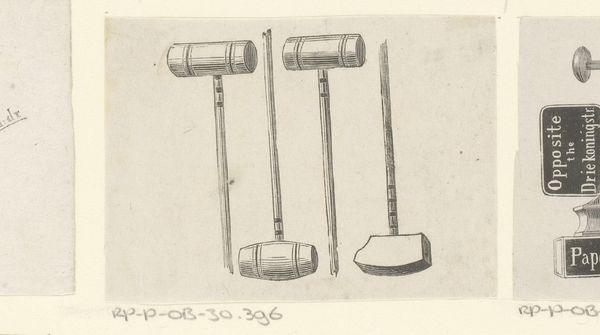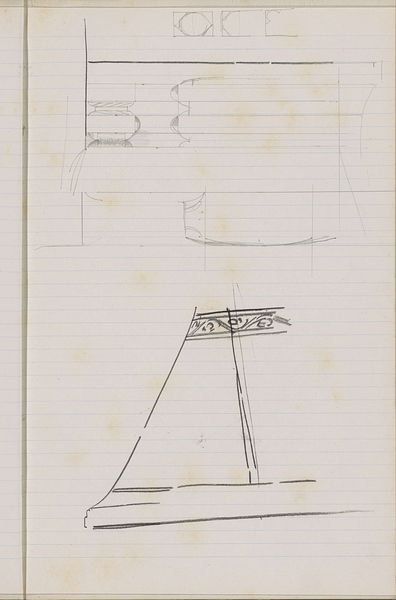
drawing, paper, pencil
#
drawing
#
art-nouveau
#
paper
#
geometric
#
pencil
#
line
Copyright: Rijks Museum: Open Domain
Curator: Here we have Gerrit Willem Dijsselhof's "Tafelpoten," or "Table Legs," created around 1901. It's a drawing rendered in pencil on paper. Editor: Wow, it feels incredibly alive, doesn't it? Even just a sketch. Those legs, especially the one ending in a clawed foot... it has this primordial power, like something straight out of a fairy tale, maybe slightly sinister? Curator: Indeed. Dijsselhof, a key figure in Dutch Art Nouveau, was known for imbuing everyday objects with symbolic meaning and an almost spiritual energy. The very lines and shapes carry aesthetic and symbolic value. We see here a clear exploration of form and function. The legs progress from simple geometric shapes to something more organic, almost bestial. Editor: The one that's basically an eagle's talon gripping the ground…there's an intent, right? It isn’t just about supporting a table, it feels almost predatory. The sketch is full of implied tensions and latent movement—a table leg ready to pounce. Does it connect at all with broader themes in Art Nouveau? Curator: Absolutely. Art Nouveau often explored themes of nature, growth, and transformation, frequently with a focus on the tension between organic and geometric forms. Dijsselhof’s rendering highlights this through a stark interplay of linear precision and quasi-naturalistic details. The sketch investigates the evolution of an object, perhaps even hinting at the metamorphosis of natural forms into functional design. Look closely, and the structure reveals much beyond the initial representation. Editor: It definitely complicates my understanding of ‘table leg.’ He is prompting you to view it, analyze it, and think differently about this everyday thing... almost a visual game, right? Did he use these legs in any real projects, or were they studies? Curator: Records show they remained as studies; it's a concentrated, rather exquisite examination. Each variation allows an appreciation of a unique relationship with space, balance and what constitutes beauty in support and structure. Editor: Right. It goes beyond surface appearances into deeper form, even life-like forms! Thanks, I learned a lot from looking deeper than I thought I would at mere table legs. Curator: And the drawing rewards exactly that sort of close and thoughtful study. I find myself considering function and artistry, where everyday items can inspire creativity when looked at anew.
Comments
No comments
Be the first to comment and join the conversation on the ultimate creative platform.
